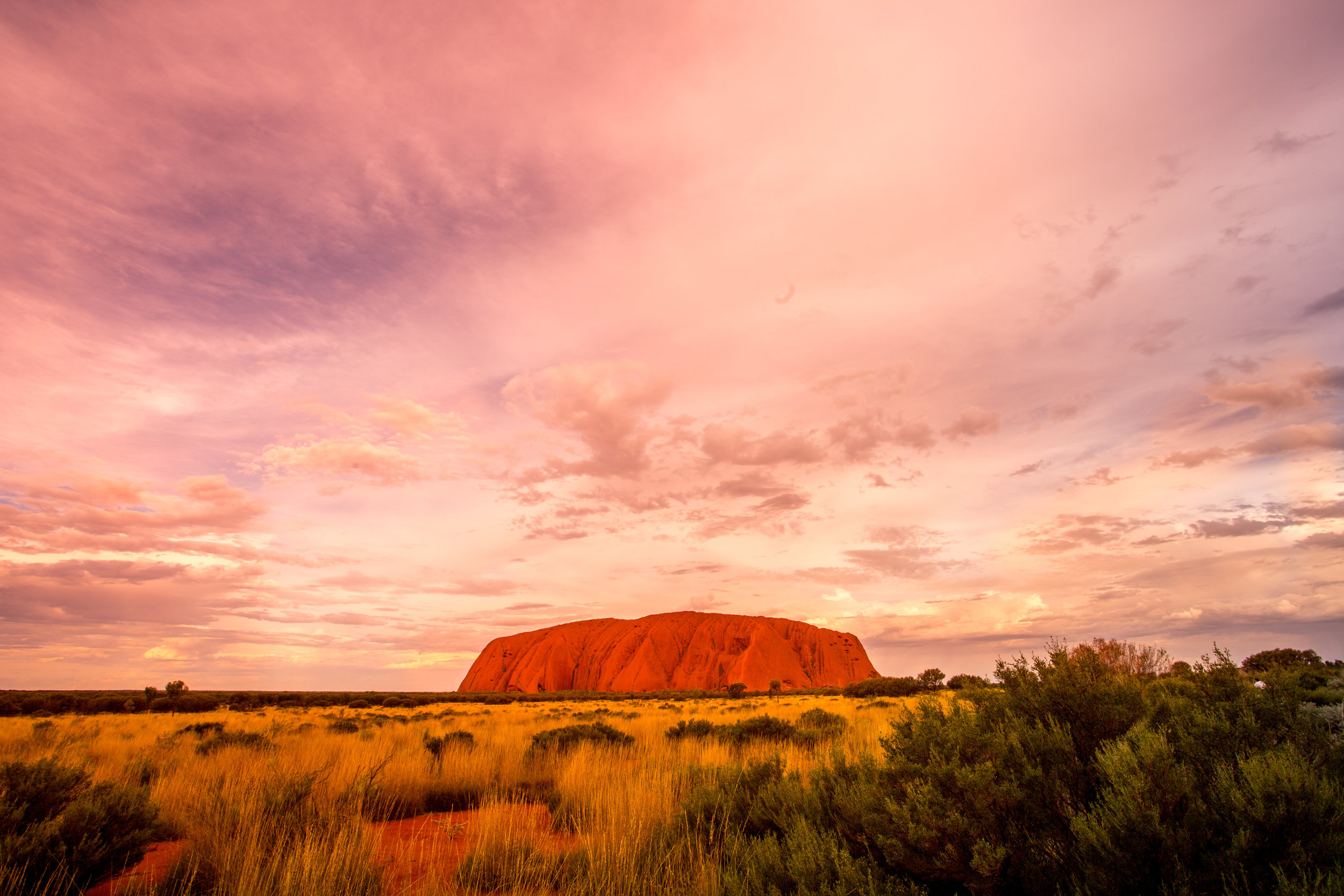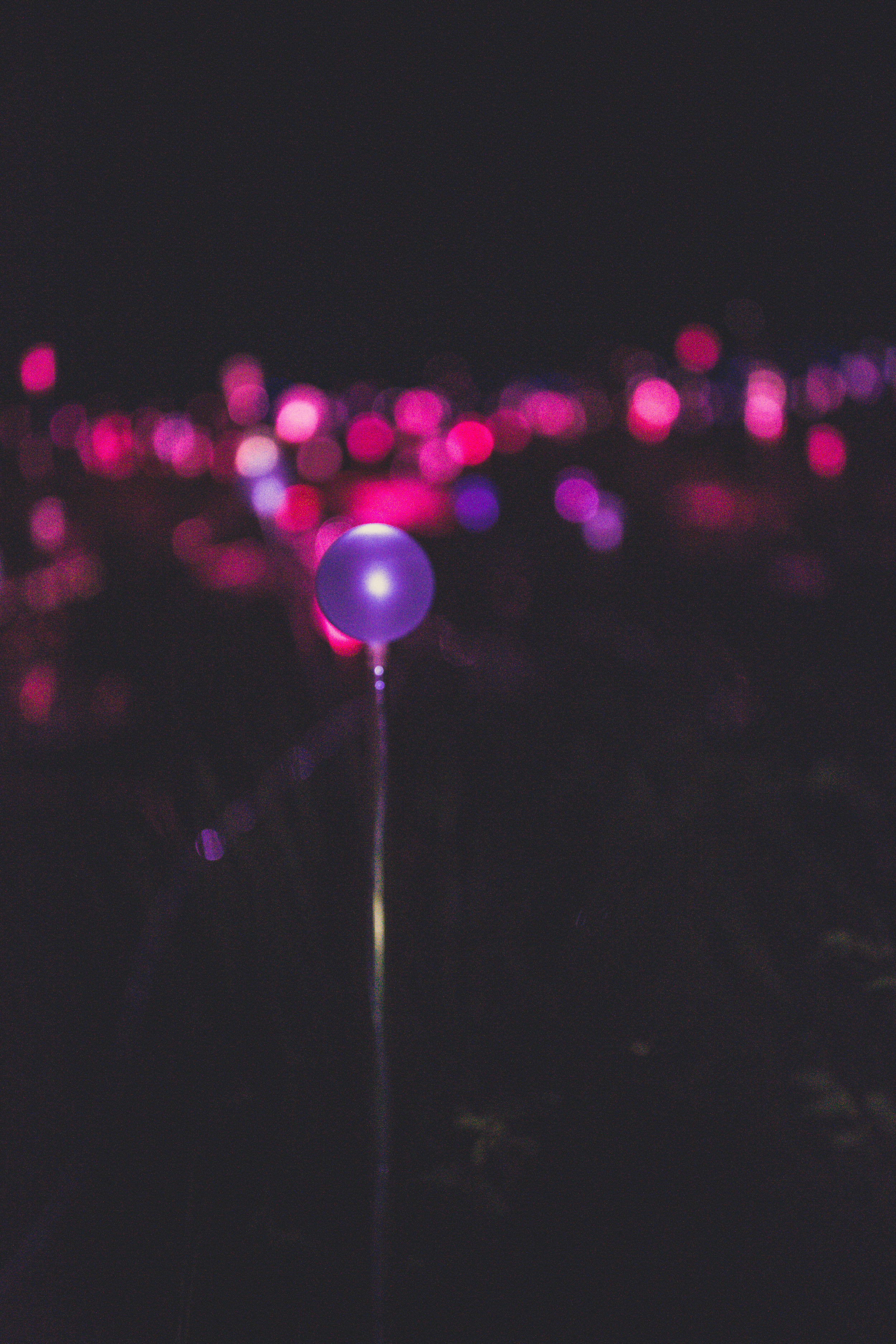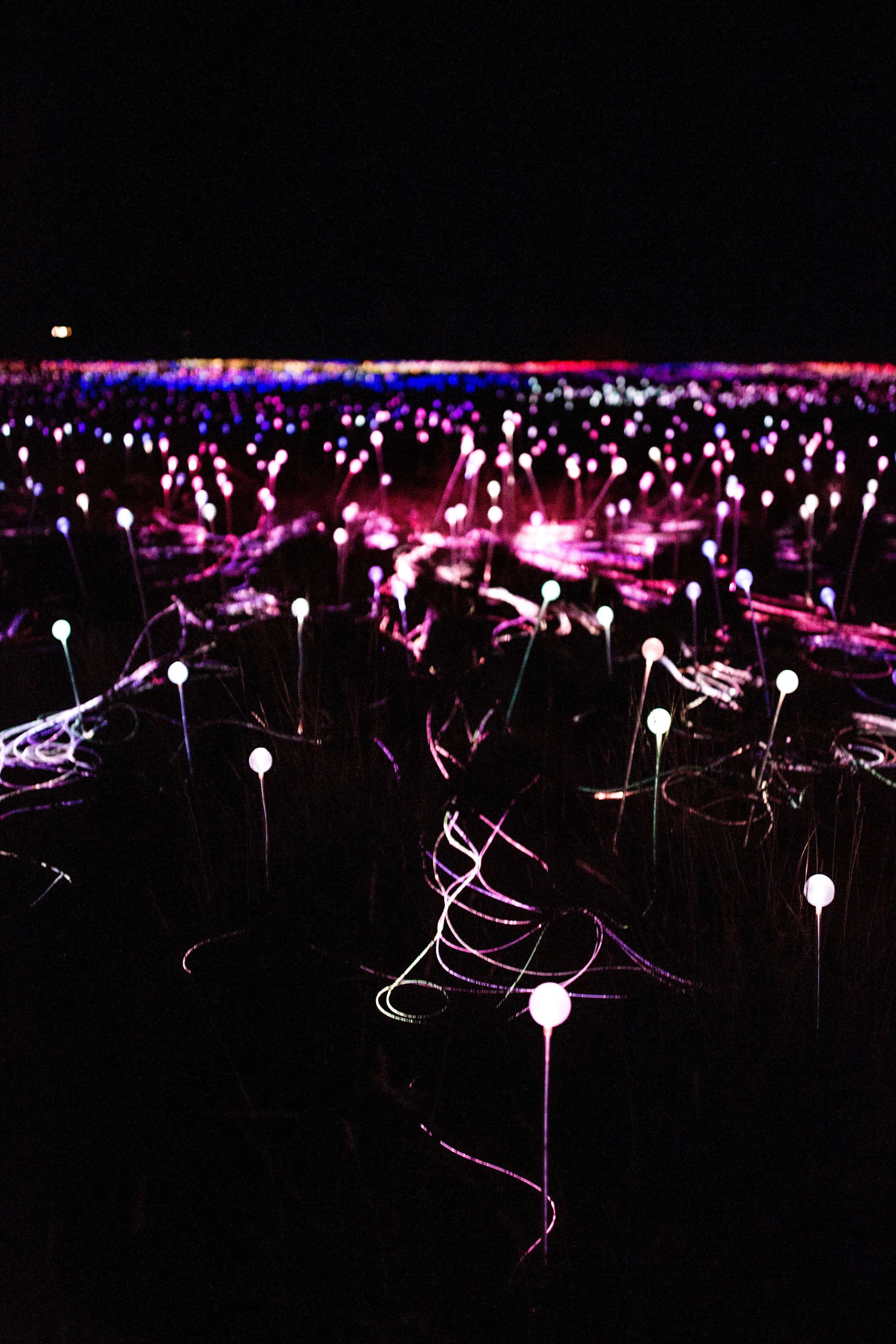Uluru - Kata Tjuta National Park
No matter how many times you’ve seen pictures of Uluru, nothing prepares you for the impressive sight of the Rock on the horizon as it stands 348m out of the surrounding sandy scrubland. The most iconic natural sight of Australia and one of the symbols of the continent, it should be an absolute must on any itinerary, and it has far more to understand beyond the physical structure.
Visiting the park gave me a much greater understanding of Aborigine culture and history and the troubled past of these sacred lands. Visit the Cultural Centre as soon as you arrive at the National Park where you are able to learn more about what makes the area so special. Aboriginal creation stories tell of how the rock is believed to have gotten it’s holes and creases as well as songs, rituals and hunting techniques that are handed down through generations. Records show that the Anangu people have been in the area for more than 10,000 years, with the history of this explained through videos of people sharing their experiences and a focus the significance of it being returned to them. Today, the land is owned by the Anangu, leased by the government and jointly managed by the Anangu and Parks Australia.
The rock extends 1.5 miles underground, which the Anangu believe to be a hollow space containing an energy source marking the spot where ‘dreamtime’ began. They also believe that the area around Uluru is the home of their ancestors and is inhabited by many ancestral beings. You appreciate why it is so important that we are respectful not to climb the rock and there is a book at the end so that you can instead proudly sign your name as having not climbed.
Standing in front of Uluru, seeing the massive bulk rising above the flat plain is impressive. The rock undergoes dramatic colour changes throughout the day with the terracotta shade turning burnished orange at sunset and flaming red in the mornings as the sun rises behind it.
There are a few walks around Uluru. The Kuniya Walk is an easy 1km walk to the Mutitjulu Waterhole on the Southern side. There is some rock art in the rock shelter en route and it’s a good place to learn about the Tjukurpa of the area. Sacred sites are located around the base of Uluru with entry to and knowledge of the particular significance of these areas being restricted by Anangu Law.
Kata Tjuta is a collection of 36 variously-sized rock domes 36km to the west of Uluru. It is believed that this was once a monolith much larger than Uluru which eroded to several separate bulks of rock. Kata Tjuta has some great walks, but plan to do them early in the morning before the heat gets too much. The Walpa Gorge Walk is around 2.6km and takes you in between two enormous looming rocks. The Valley of the Winds walk has three variations, with the longer two being closed when temperatures are above 36 degrees, which it was during my visit and we found the first stop a little underwhelming. The full loop is said to be very impressive, but it’s always nice to have a reason to go back.
After sunset, make sure to visit Field of Light where rhythms of colour light up the desert as far as the eye can see. The exhibition is aptly named Tili Wiru Tjuta Nyakutjaku or ‘looking at lots of beautiful lights’ and is completely overwhelming with more than 50,000 solar-powered stems lighting up at sunset and glowing through the night covering an area the size of four football fields.
Top Tips for visiting Uluru
- Ayers Rock airport is just 15km north of the rock and has daily flights to Sydney, Cairns and Perth. Alice Springs is a 5 hour drive away and hire car kilometres aren’t unlimited so it works out better to save your time flying direct to Ayers Rock.
- There is no accommodation inside the park and no camping allowed within the borders. Yulara is the resort town where accommodation and facilities are. There are a few hotels here which seem fairly similar. We stayed at Sails in the Desert which wasn’t as luxurious as it’s website would let you believe, but you will be out making the most of your time visiting Uluru. There is a small town centre with a supermarket and some cafe’s and restaurants.
- Rent a car at the airport so that you can move around the National Park as you wish. You get a fixed amount of km’s that’s well below what you will do, but it’s worth it for the flexibility. Otherwise you can book onto a tour or take transfers, but these are also costly so it weighs up in the end.
- The minimum permit is 3 days which costs $25AUD per person and is bought at the entry to the park.
- Bring lots of water. There are spots to fill up water bottles at different points. It’s important to drink even when you think you aren’t thirsty, especially while hiking.
- There are flies everywhere. You won’t believe how annoying these particular flies are until you encounter them. As soon as you get out of your car you will have at least 20 of them all over you, mainly in your face. Other more prepared visitors had head nets which would definitely improve your visit.
- Wear comfortable walking shoes, the terrain on the walks is rough with loose stones and the whole are is very dusty.
- One night is enough to spend here, flights land early in the morning and leave around lunchtime the next day which gives you plenty of time to really experience the area.










